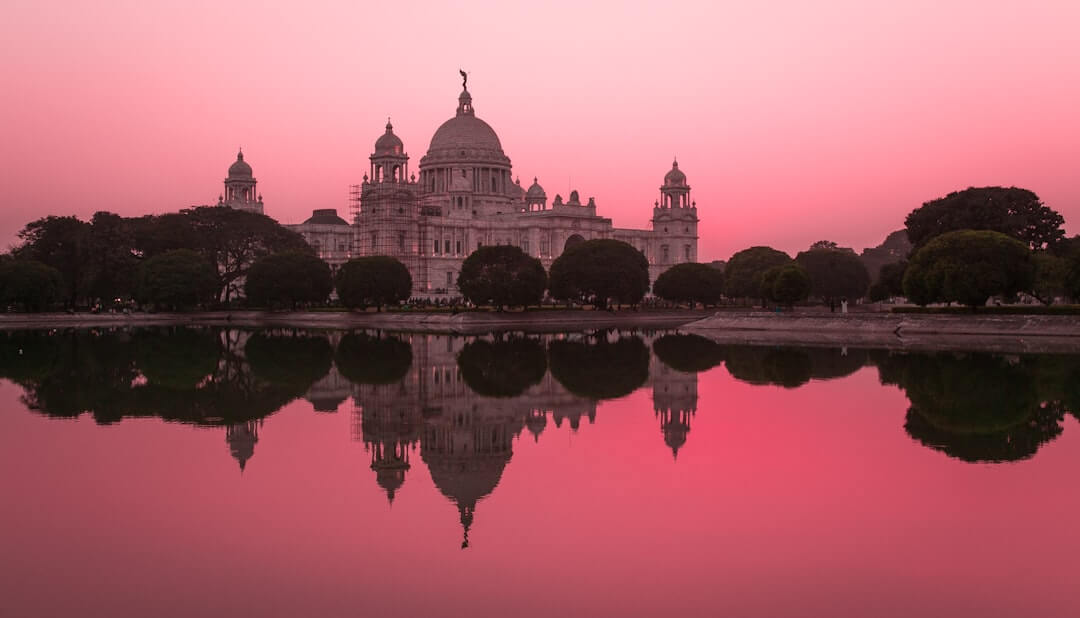The India-Pakistan Conflict is a fascinating topic. The situation I am going to describe is that India is highly fragmented. Known as Bharat or Mahabharata—no one knows what exactly to call it—it is referred to as a great and powerful nation, on the basis of which Modi and other Hindu leaders proudly parade themselves around the world, especially oppressing Muslims and other minorities within its borders, making life difficult for them.
This narrative isn’t just about political differences or historical disputes; it’s about a country slowly breaking apart under the weight of its own contradictions. India, once seen as a rising global power, is now increasingly viewed as a deeply divided entity riddled with internal strife, separatist movements, religious polarization, and external pressures. These fractures are not only reshaping the internal dynamics of the Indian subcontinent but also have significant implications for the long-standing India-Pakistan conflict , particularly in regions like Jammu and Kashmir, where the struggle for self-determination has persisted for decades.
In this video, civilians revolted against the Indian army in Guwahati, taking control of military installations as soldiers fled, highlighting growing unrest in the northeast Assam.
Table of Contents
Understanding the Internal Divisions Within India
What is the condition of this India? How divided is it internally? How deeply rooted is this division, and how broken is the country? What will its future look like? Let’s discuss these points: Why has it reached such a state?
At the core of India’s instability lies a combination of ethnic, linguistic, religious, and regional divisions. Despite being the largest democracy in the world, India struggles with inclusivity, representation, and justice for all communities. Under the current regime led by Prime Minister Narendra Modi, nationalism has taken on a more exclusionary form, often centered around Hindu majoritarianism. This has alienated large sections of the population, including Muslims, Sikhs, Dalits, Adivasis, and people from the northeastern states.
This growing discontent has created fertile ground for separatist sentiments across various parts of the country. From the northernmost tip in Jammu and Kashmir to the southernmost states like Tamil Nadu, there are simmering tensions that threaten the unity of the Indian union.
China’s Role in India’s Territorial Integrity Crisis
The reason behind this deepening crisis is multifaceted. One key factor contributing to India’s vulnerability is the aggressive posturing by China. Recently, China has declared Arunachal Pradesh—a state in India—as its own territory, renaming it Zangnan. It has officially announced new Chinese names for all important locations within the entire state, all now labeled in the Chinese language.
As previously noted, China has been steadily settling people in the region over time, promoting its own culture and integrating local cultural elements with its own. Now, China has made an official declaration, and Pakistan has supported it. Asif Bajwa supports it as well, Turkey is expected to support it soon, and Russia is also likely to join in.
This move by China has sent shockwaves through the Indian establishment. Arunachal Pradesh, which India claims as its integral part, is not only strategically located near the border with Tibet but also symbolizes the fragile nature of India’s territorial integrity. With international backing for China’s claim, India finds itself isolated and unable to defend its position effectively.
Sikkim and the Northeastern States: A Strategic Threat
So, you can imagine that Arunachal Pradesh—the first blow—will separate from India. Alongside it, Sikkim, a strategically significant state providing India major advantages due to its high elevation, will be the next target. Chinese forces are already positioning themselves for an attack here. Thus, both Arunachal Pradesh and Sikkim will become parts of Greater China.
Sikkim was once an independent kingdom before being annexed by India in 1975. Its strategic importance cannot be overstated, as it serves as a gateway to the northeastern states. If China successfully captures Sikkim, it would significantly weaken India’s military posture in the region and embolden other separatist groups.
Moving forward, once Sikkim is gone, the narrow corridor connecting the rest of India to its northeastern states (often called the “Seven Sisters”) will be cut off. The Seven Sisters include Assam, Manipur, Meghalaya, Mizoram, Nagaland, Tripura, and Arunachal Pradesh. But now, with one sister lost to China, they will become the Six Sisters.
Separatist movements have long existed in this region, growing stronger over time without any control from the Indian government. These six northeastern states may unite under a single identity, even having already chosen a specific flag color. This development poses a serious threat to India’s unity and could trigger a chain reaction of secessionist demands elsewhere.
Nepal’s Independence Movement and Its Impact on Kashmir
Thirdly, another part of India poised to break away is Nepal, whose independence movement will influence the Kashmiri struggle. While Nepal is currently an independent nation, some analysts argue that certain regions within Nepal have historical and cultural ties with India, and their potential alignment with separatist movements in India could create further instability.
Kashmir has had a prolonged movement spanning decades; the Kashmiris do not want to remain part of India. Both sides of Kashmir (Indian and Pakistani administered) may unite into one homeland, breaking away from India. With Arunachal Pradesh becoming part of China, international diplomatic pressure will mount morally and globally—if Arunachal Pradesh can become part of China, why shouldn’t Kashmir have the right to self-determination?
This argument is gaining traction among global observers who question the legitimacy of India’s occupation of Jammu and Kashmir. The revocation of Article 370 in August 2019, which stripped the region of its special status, has only intensified resistance among Kashmiris. If India loses control of other regions, the case for Kashmiri independence becomes even stronger.
Khalistan: The Resurgence of Sikh Separatism
Fourthly, another region preparing for separation is Khalistan. The Khalistani movement has been active for decades, gaining momentum ever since Pakistan’s creation when Sikhs became increasingly aware of their identity and independence aspirations. In the 1980s, the movement was at its peak, during which many Sikhs were killed by Hindus. This Khalistan movement will result in yet another portion of India breaking away.
Although the Indian government crushed the movement violently during Operation Blue Star in 1984, the underlying grievances have never been fully addressed. Today, the diaspora-based Khalistani organizations continue to push for an independent Sikh state, and growing unrest in Punjab suggests that the issue is far from resolved.
Dravida Nadu: South India’s Demand for Autonomy
Fifthly, there’s Dravida Nadu—an idea representing South India. It includes Tamil Nadu, Telangana, Kerala, Karnataka, and Andhra Pradesh. These regions are predominantly inhabited by Dravidians, who are considered lower caste by Brahmins and have historically been suppressed.
A longstanding movement exists here among the native Dravidian-speaking people who may eventually seek independence under the name Dravida Nadu, potentially adopting their own flag as well. Though dormant for decades, recent developments suggest that the demand for greater autonomy or even full independence may resurface.
Bengal: A Region Divided Twice
Sixth, Bengal. Remember, when East Pakistan (now Bangladesh) was part of Pakistan in 1947, Bengal was divided into two parts—one remaining in India and the other forming East Pakistan. Since then, a separatist movement has continued, including the Swadeshi Movement. There is a strong linguistic identity tied to the Bengali language.
A prominent leader, Fazlul Huq, once envisioned a unified Greater Bengal. This could reignite the dream of a united Bengal once again. Given the growing dissatisfaction with central governance and economic disparity between West Bengal and the rest of India, the possibility of renewed calls for a separate Bengali identity cannot be ruled out.
The Future of “Hindu Rashtra”
Ultimately, what remains of India will be the so-called “Hindu Rashtra”—Modi’s vision of a purely Hindu India, surrounded and isolated landlocked. Eventually, public uprising will shatter the arrogance and pride of the ruling elite. We will witness the fall of thrones and crowns, as people rise up to claim their rights.
India is profoundly divided from within.
Reckon News Update: Guwahati Uprising
Reckon News In the city of Guwahati, Assam, people have revolted against the Indian army. Clashes have erupted between civilians and military personnel. Indian soldiers are abandoning their weapons and fleeing the city, while locals have taken control of military installations.
This incident highlights the growing unrest in India’s northeast and the weakening grip of the central government. As more regions resist integration and assert their identities, the very fabric of the Indian state appears to be unraveling.
Conclusion: Implications for the India-Pakistan Conflict
The fragmentation of India has profound implications for the India-Pakistan conflict . As India faces increasing internal challenges, its ability to maintain control over disputed territories like Jammu and Kashmir is likely to diminish. Pakistan must remain vigilant and prepared to support legitimate freedom movements while also navigating the complex geopolitical landscape shaped by China, Russia, and other global powers.
India’s internal disintegration could lead to a reconfiguration of the subcontinent’s political map, opening new opportunities for peace, dialogue, and self-determination. However, it also presents risks of increased militarization, humanitarian crises, and regional instability.
In conclusion, the future of South Asia is uncertain. But one thing is clear: India’s unity is no longer guaranteed, and the consequences will reverberate far beyond its borders.
Frequently Asked Questions:
Q1: What is causing India’s internal fragmentation?
A: India’s internal divisions stem from ethnic, religious, linguistic, and regional disparities. Rising Hindu nationalism, suppression of minorities, and long-standing separatist movements are accelerating the country’s fragmentation.
Q2: How does this affect the India-Pakistan conflict?
A: As India faces internal instability, its control over disputed regions like Jammu and Kashmir weakens. This could strengthen the Kashmiri independence movement and reshape the broader geopolitical dynamics between India and Pakistan.
Q3: Which regions are at risk of separation from India?
A: Potential breakaway regions include Arunachal Pradesh (due to Chinese claims), Sikkim, the northeastern “Seven Sisters,” Khalistan (Sikh homeland), Dravida Nadu (South India), and Bengal.
Q4: Has China officially claimed any Indian territory?
A: Yes, China has renamed Arunachal Pradesh as Zangnan and asserted territorial claims, signaling a strategic challenge to India’s sovereignty in the region.
Q5: What happened in Guwahati, Assam?
A: In a recent development, civilians revolted against the Indian army in Guwahati, taking control of military installations as soldiers fled, highlighting growing unrest in the northeast.
Internal: News | External: Learn More

